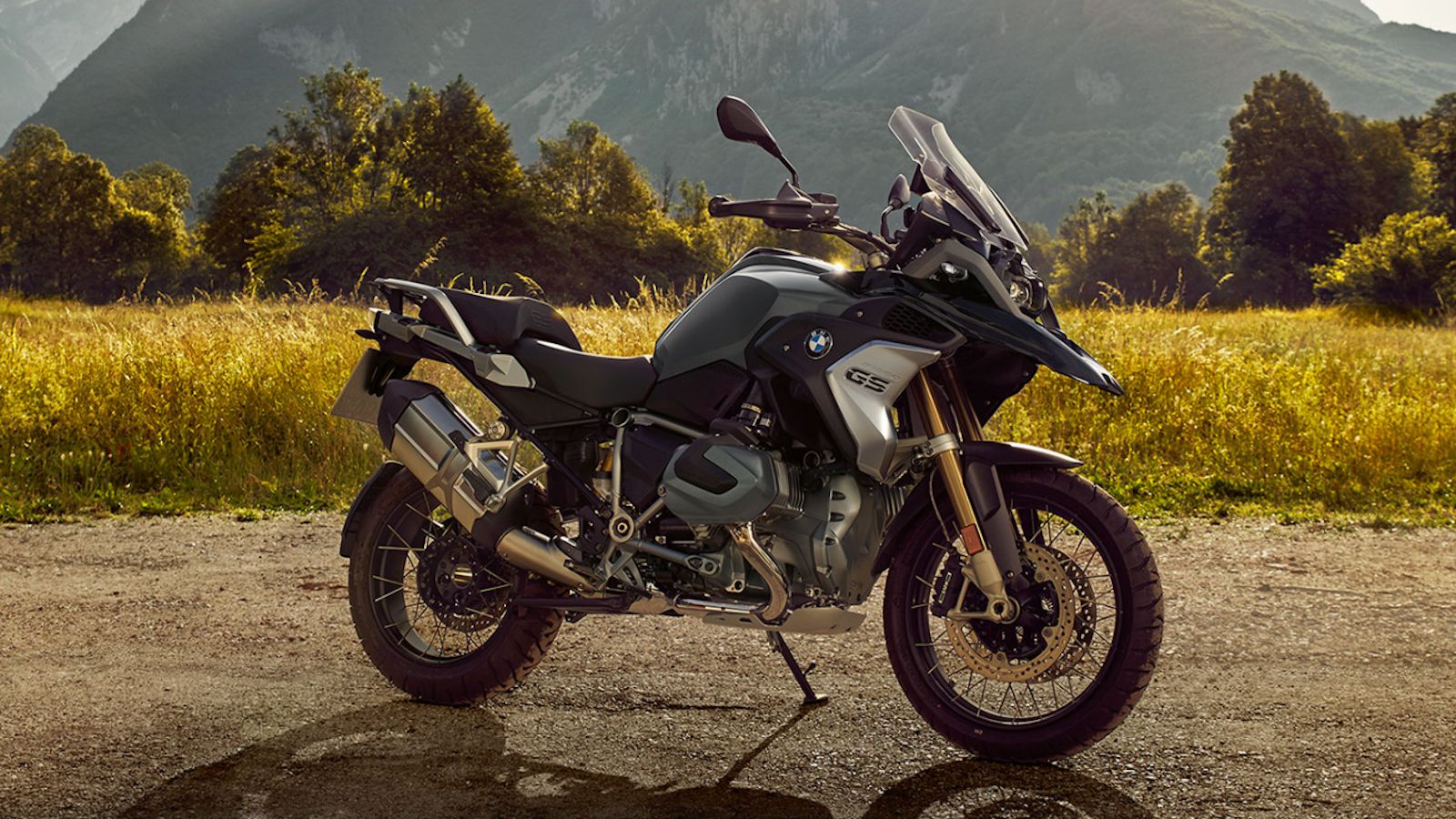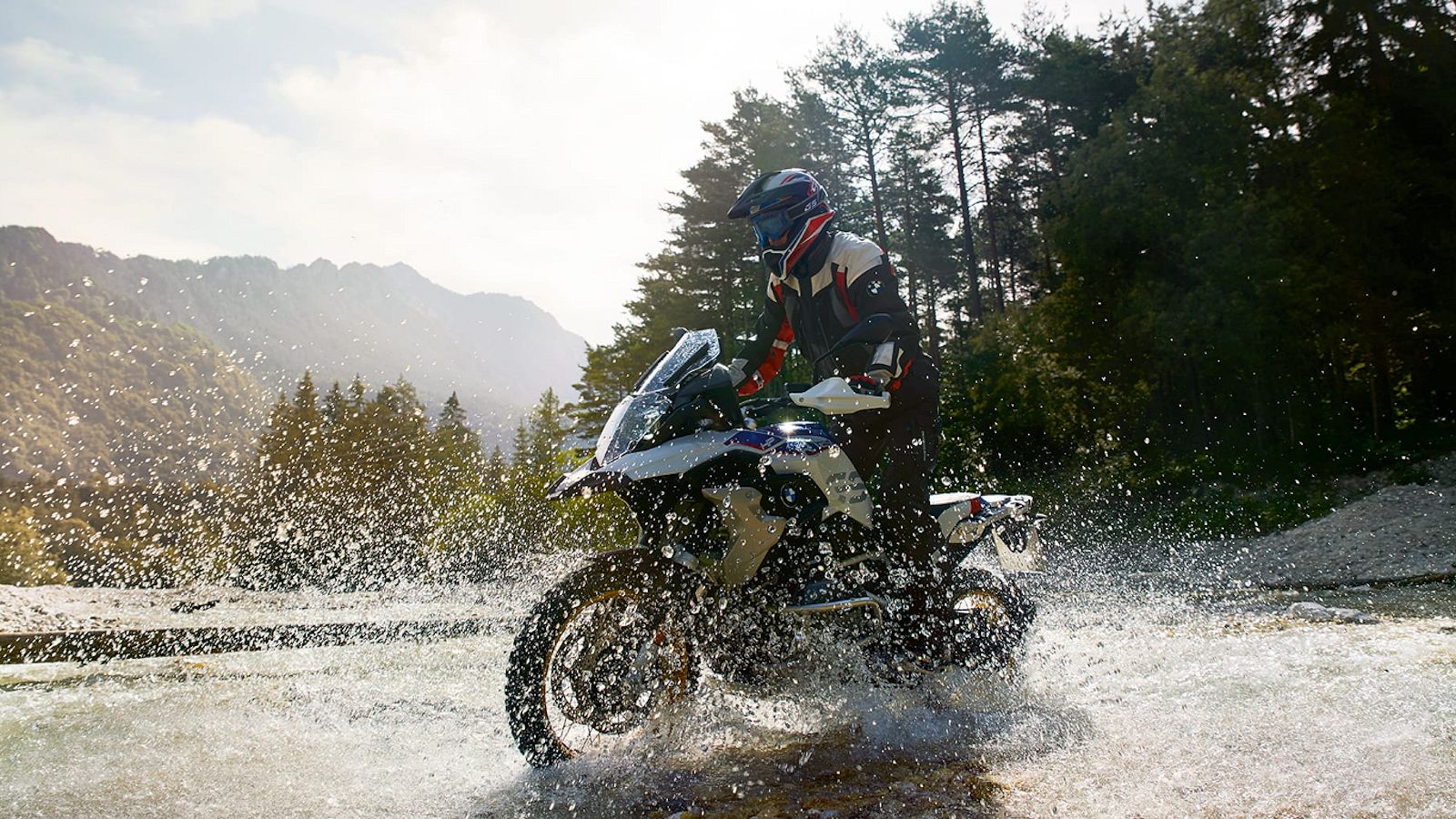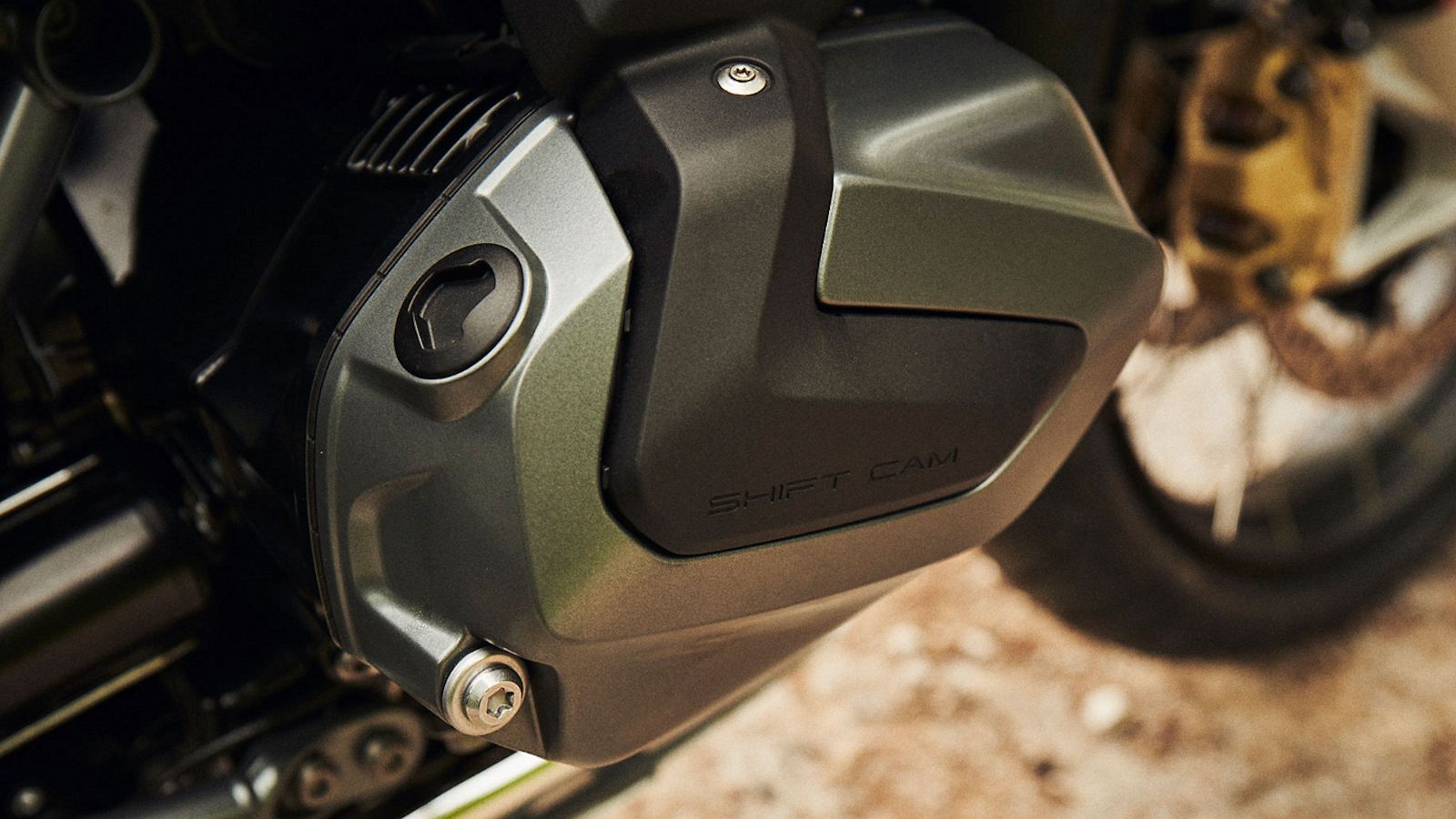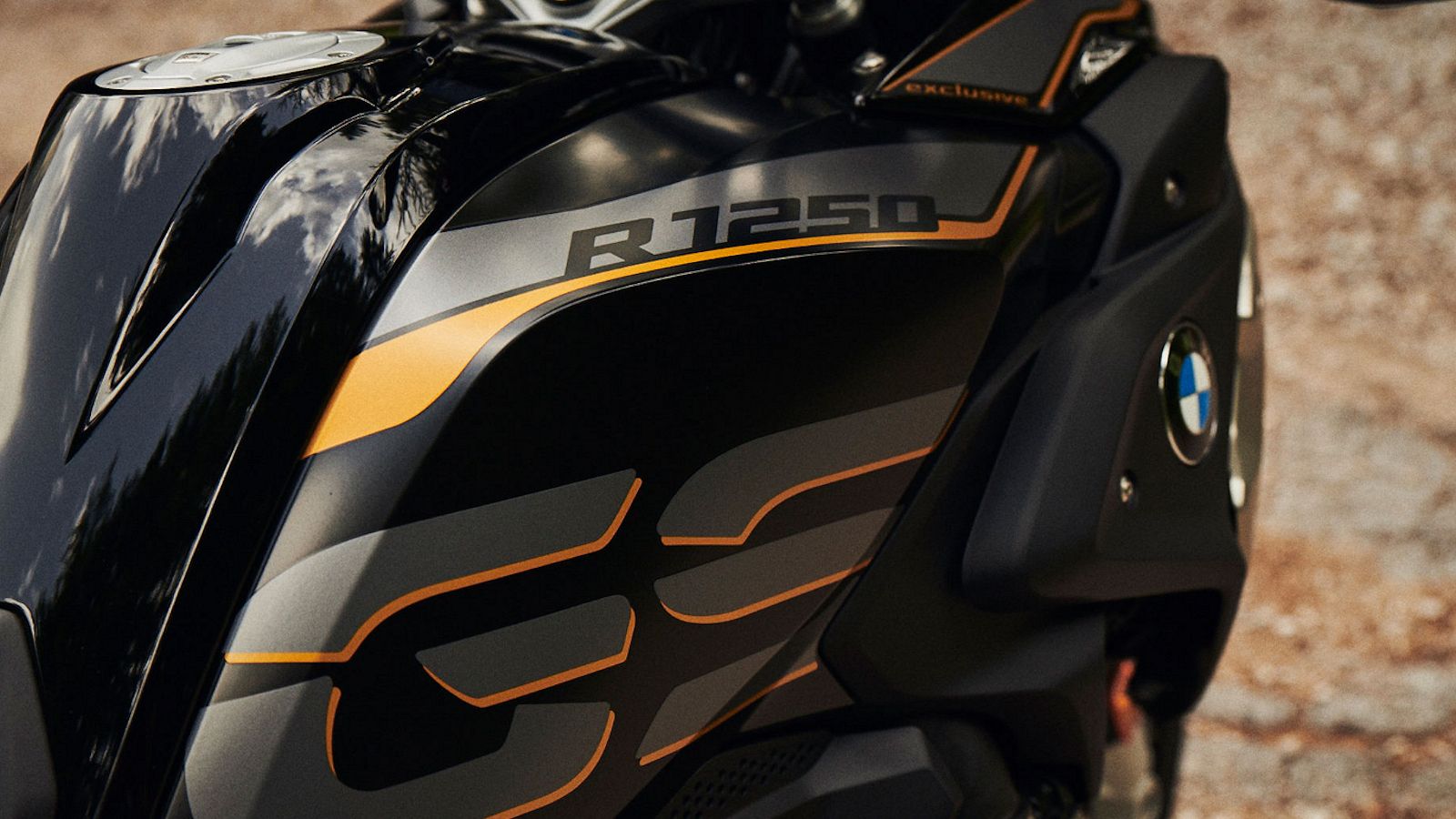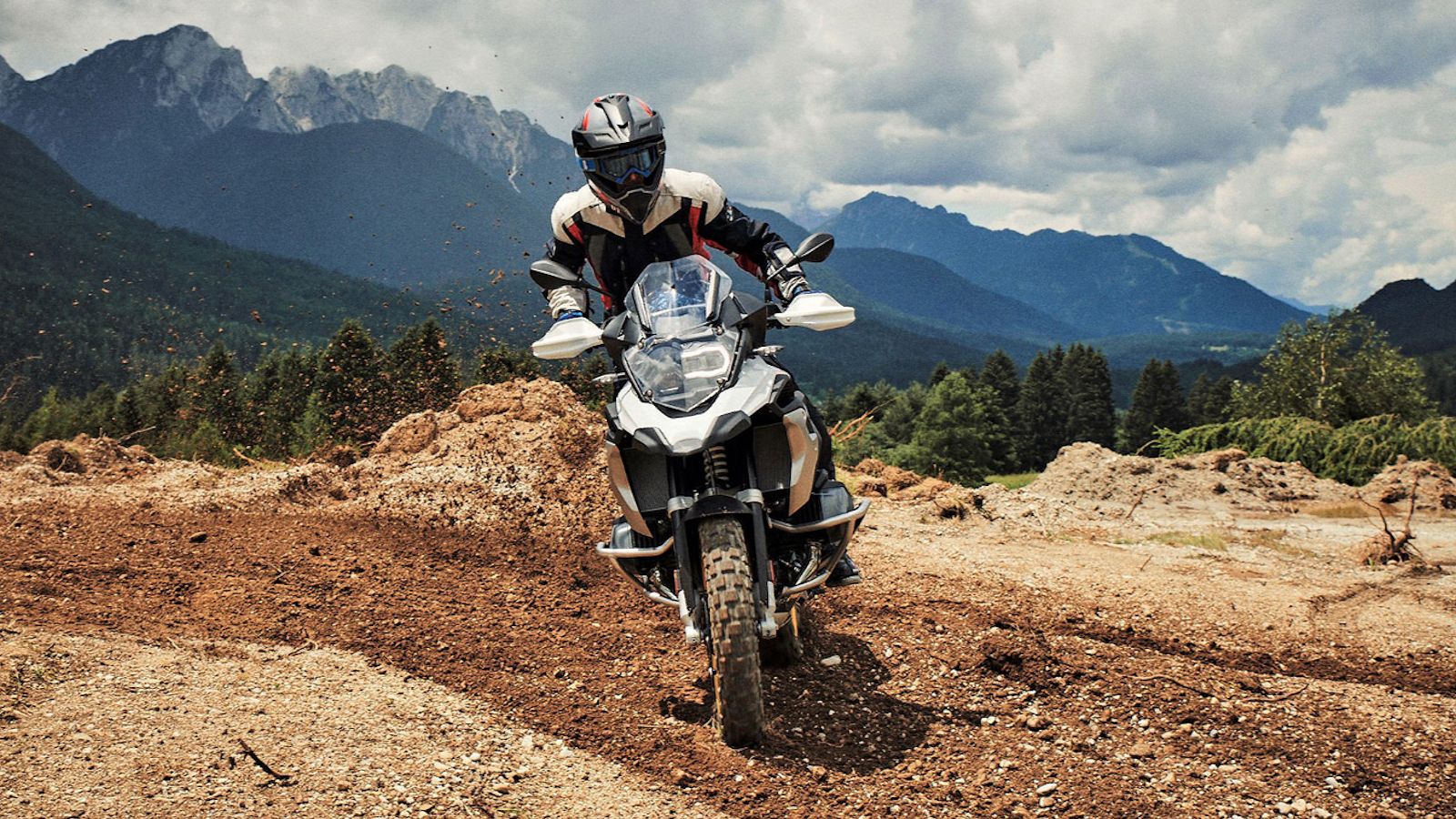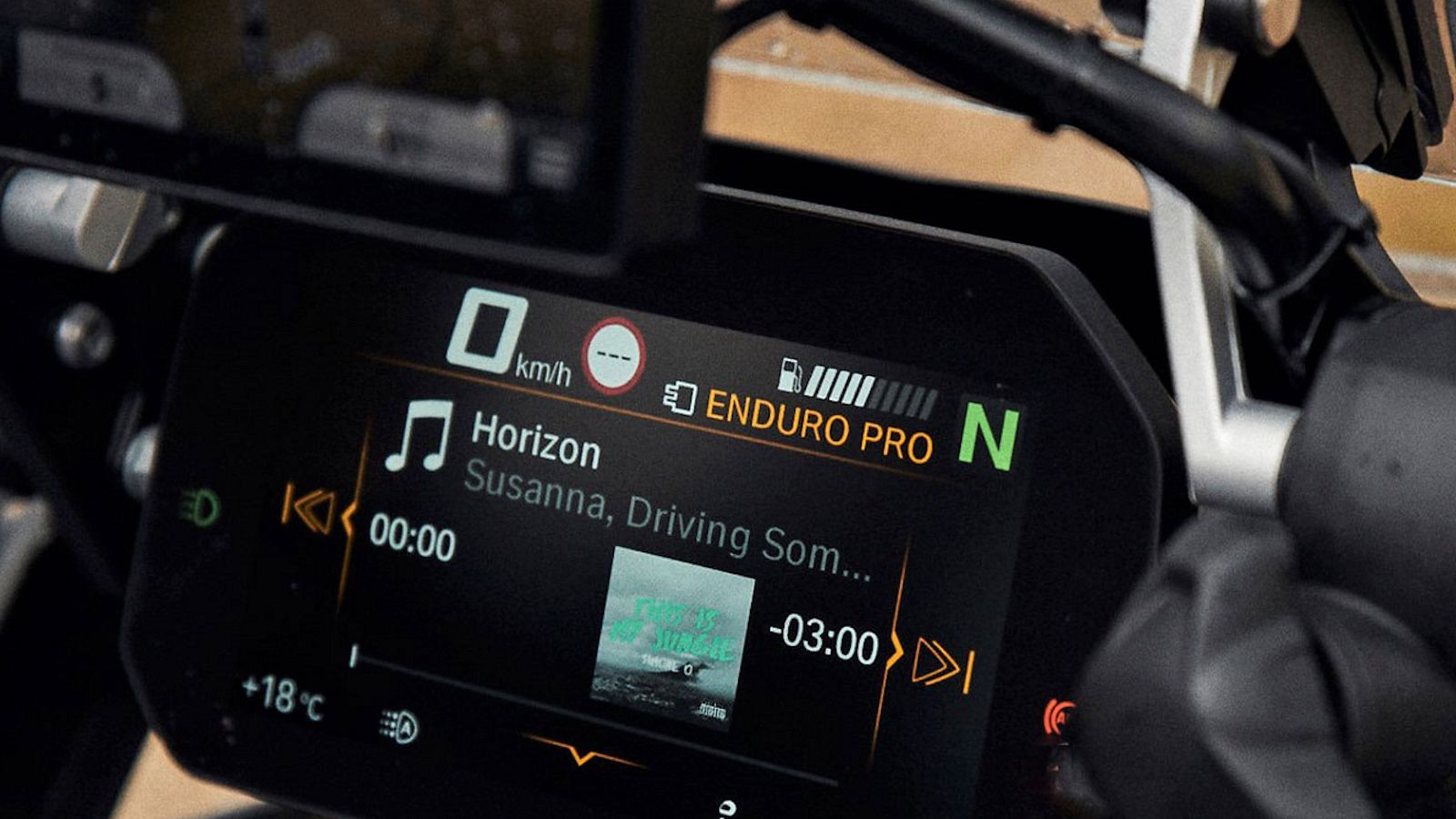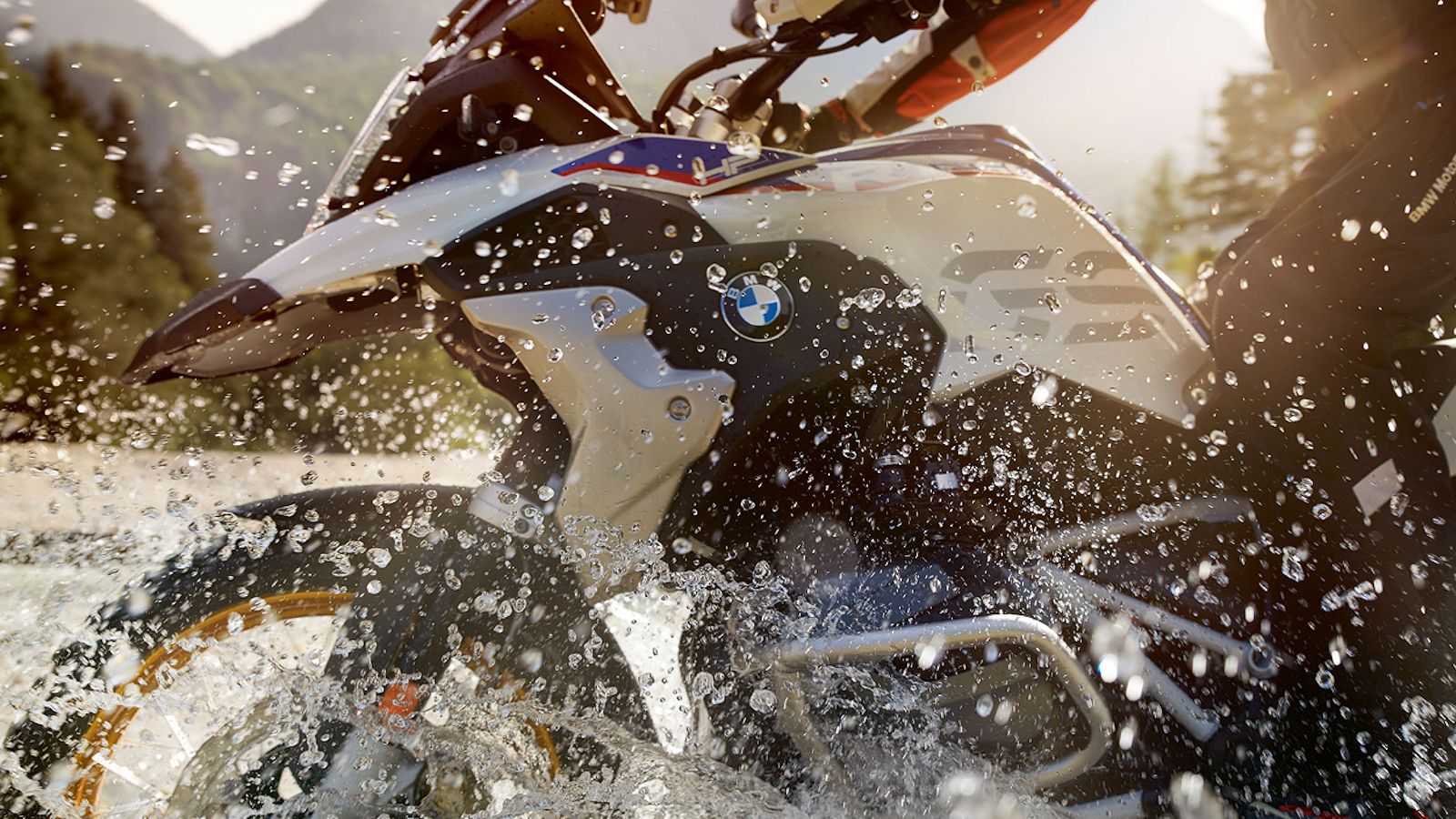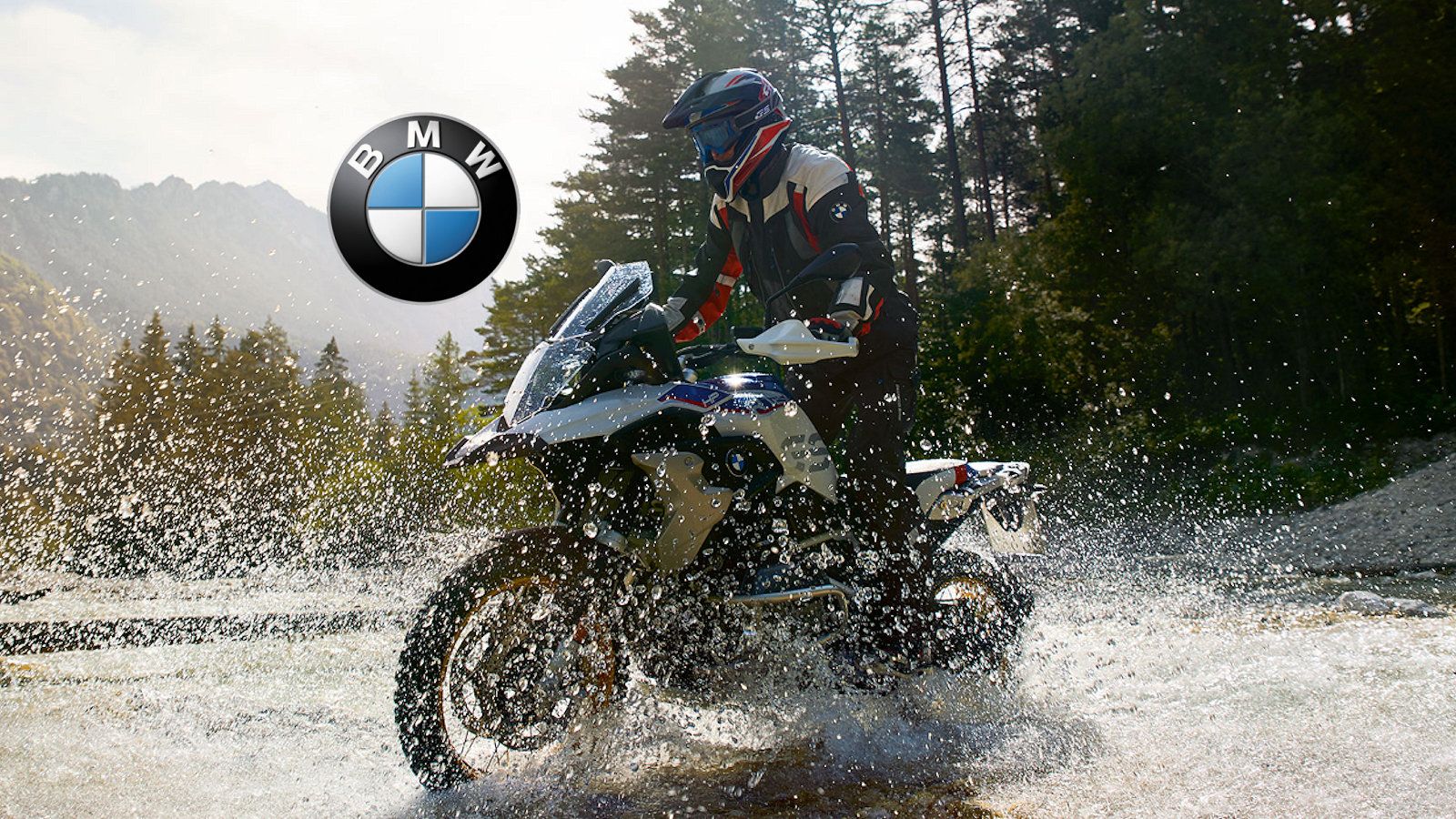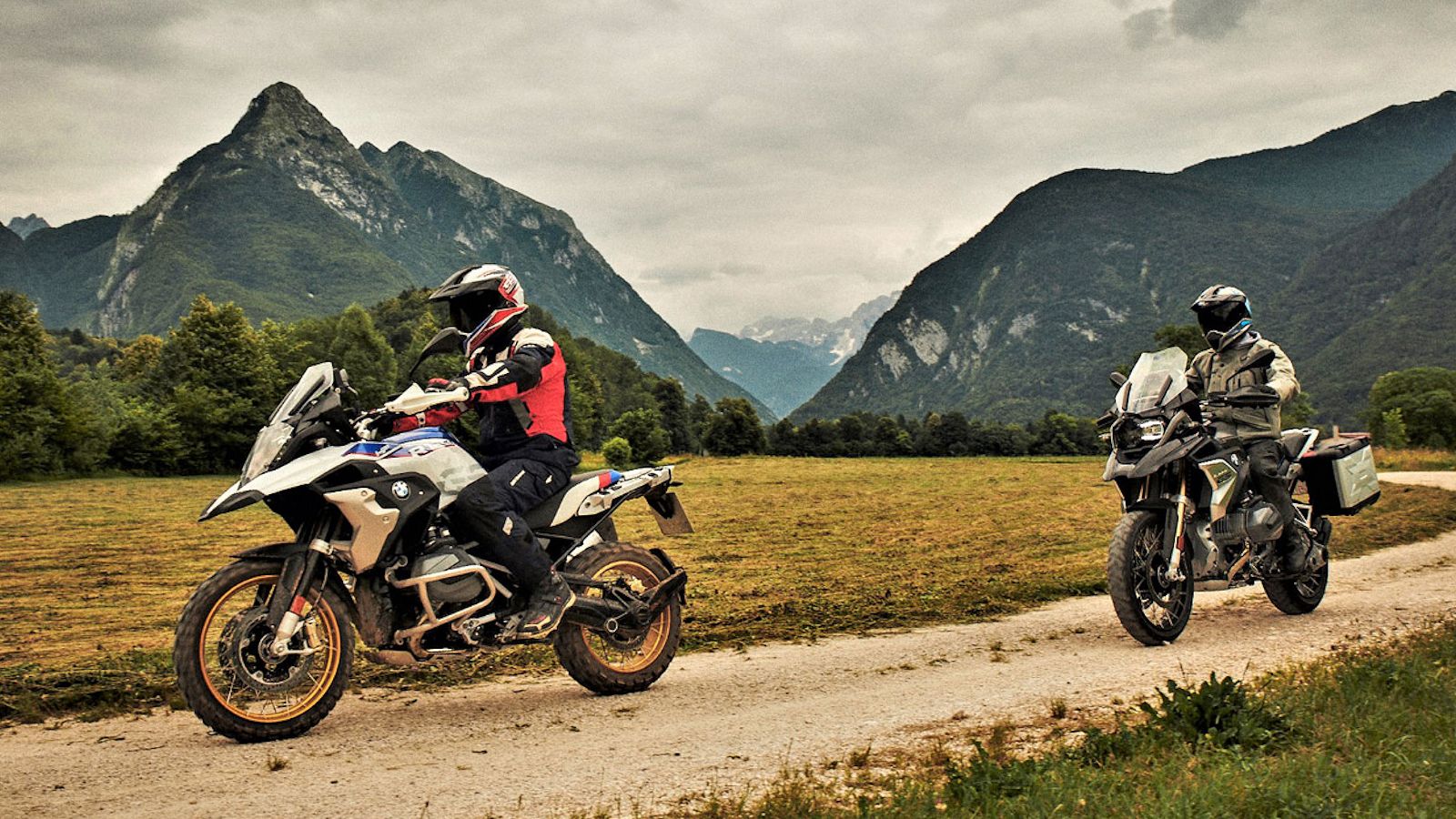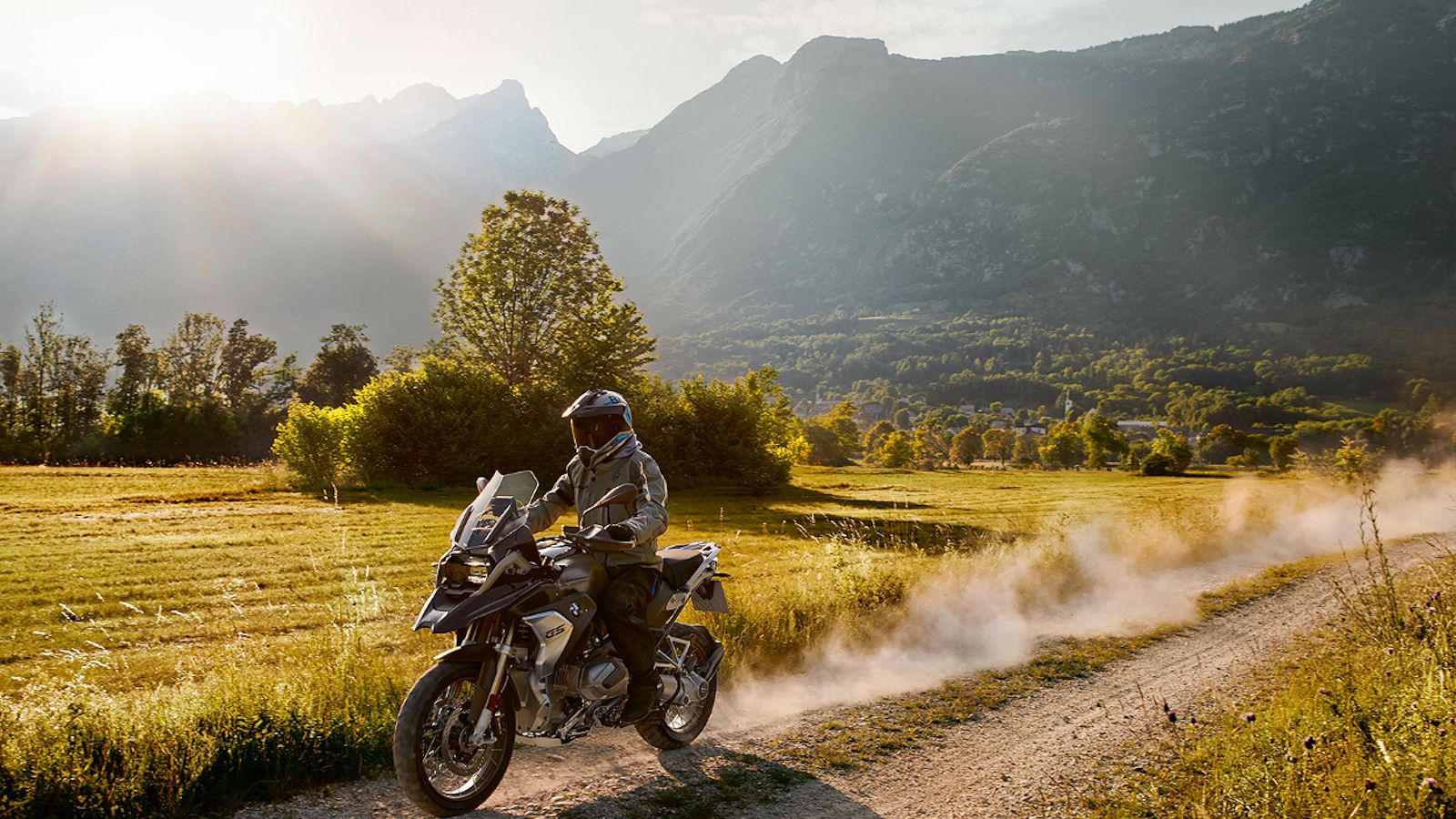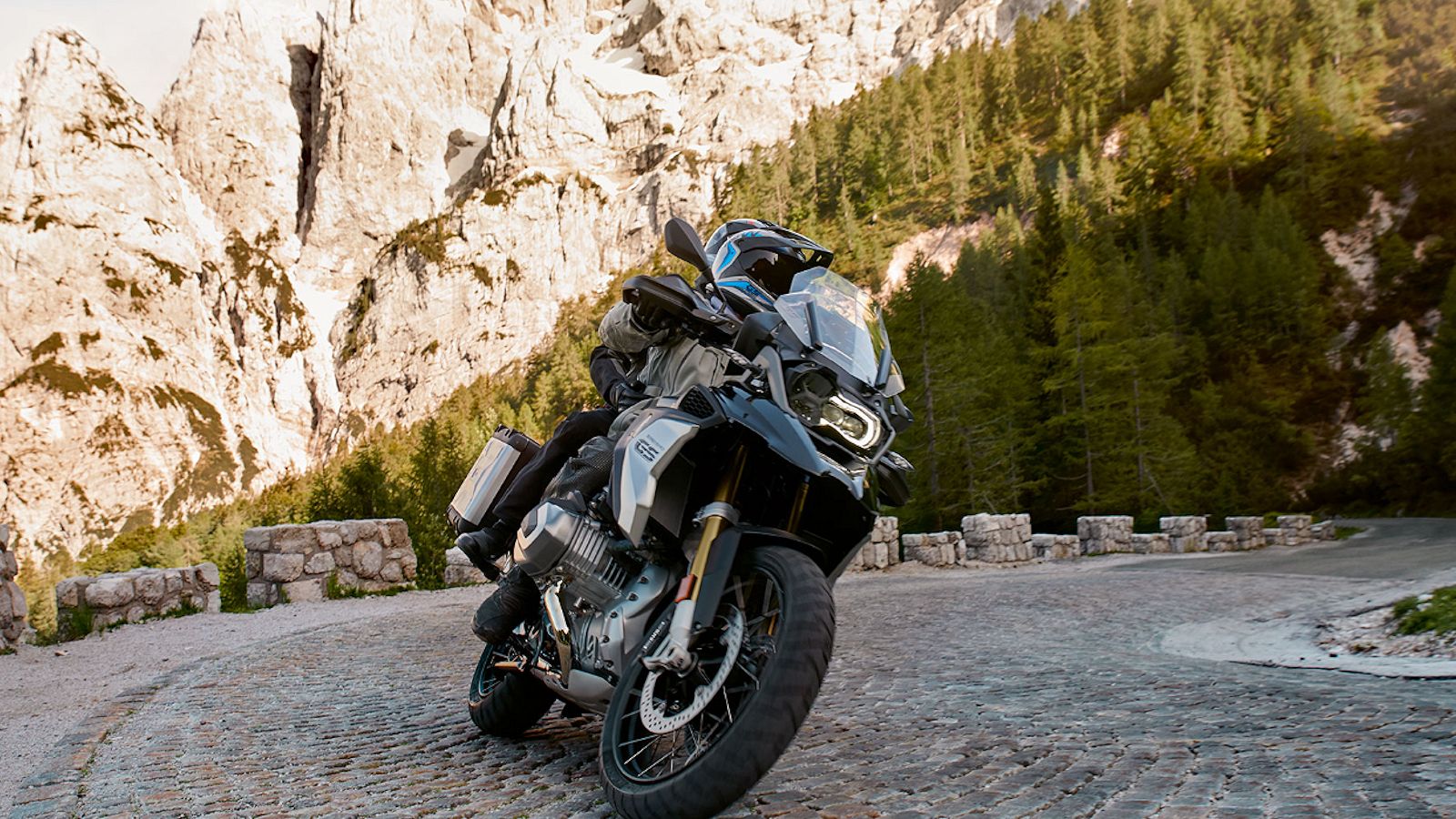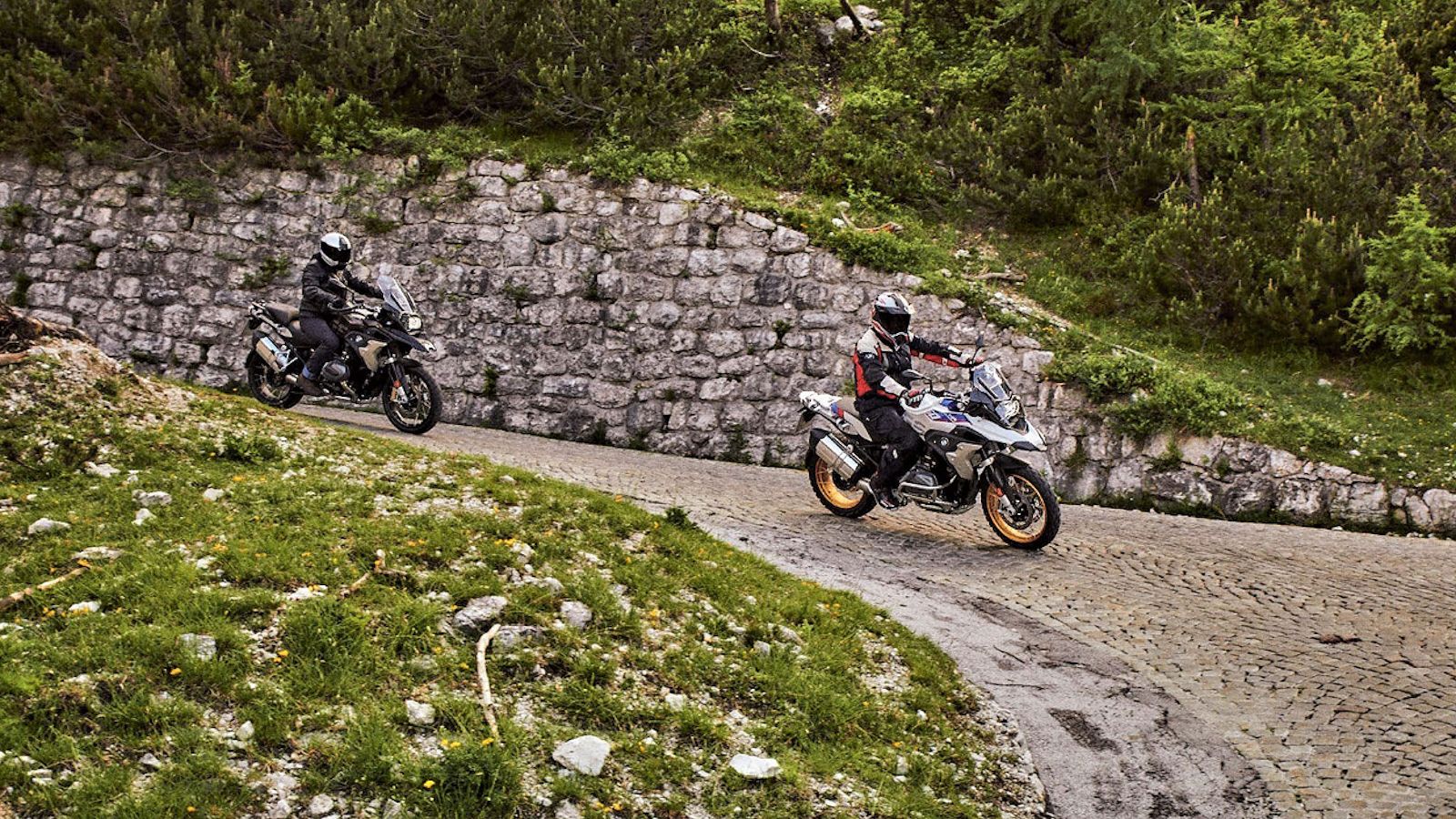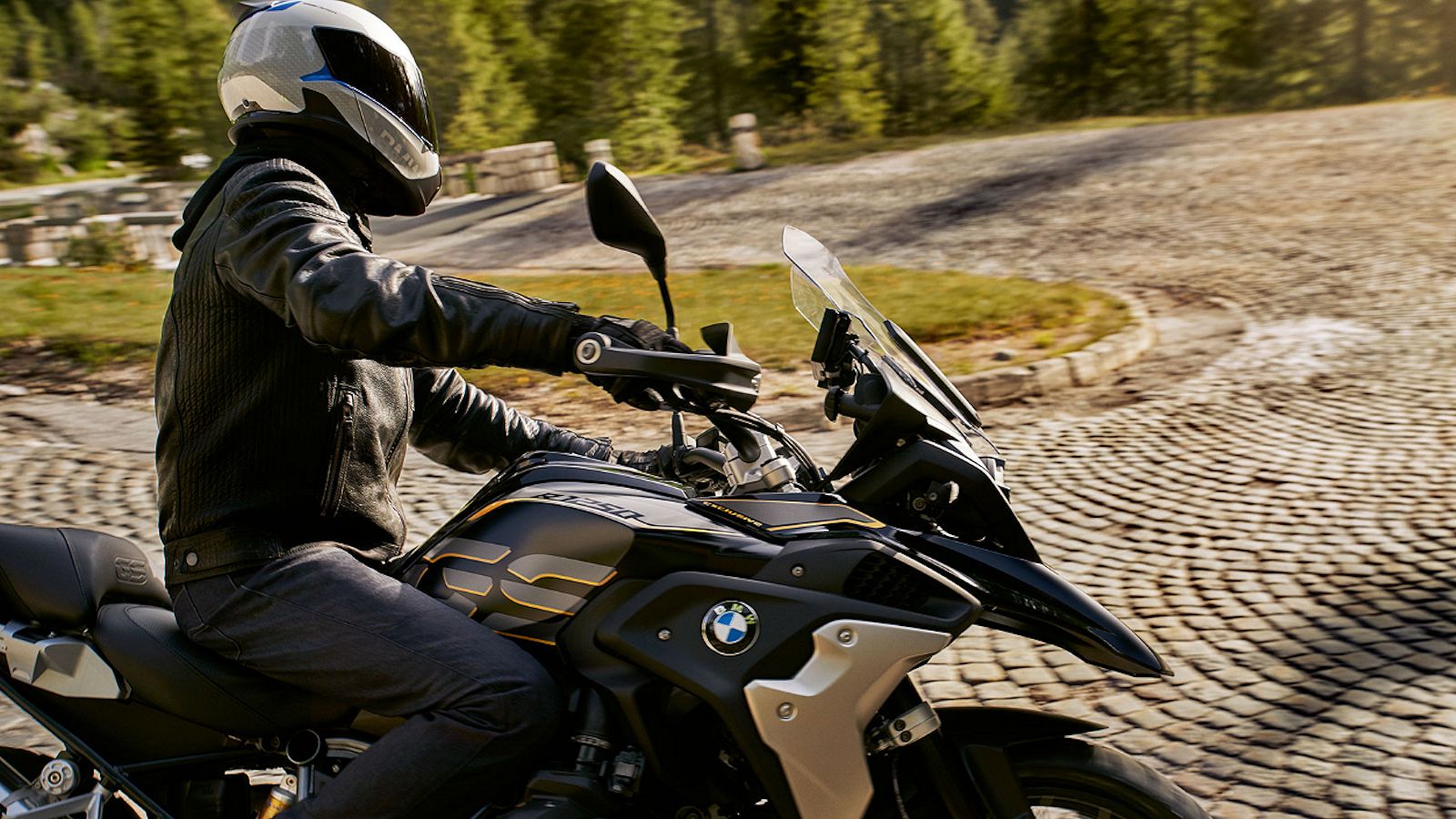BMW Motorrad refurbished its signature boxer-twin ahead of MY2019, and used it to drive its new R 1250 GS. This decidedly dual-surface adventurer delivers more of everything you're looking for in a cross-country machine. More power, more electronic fandanglery and more safety/comfort/curb appeal puts the “GS” into the top tier of adventurous two-wheelers, and though it comes stock with a definite blacktop bias, you have but to chuck on a set of knobbies to do some proper rally-style riding. Don't believe it? Let's get down to the nuts and bolts of the thing, then see how it stacks up against another proven design from the European theatre whilst I make my case.
2019 - 2020 BMW R 1250 GS
- Make: Array
- Model: 2019 - 2020 BMW R 1250 GS
- Engine/Motor: Flat twin
- [do not use] Vehicle Model: Array
BMW R 1250 GS Design
Nothing says adventure quite like a bird's-beak fairing. Beemer capitalizes on that with a strong specimen that doubles down on the fling control with a separate front fairing whose job is to protect the actual engine case and keep the cooling fins clear so they can breathe. That's especially important if you actually plan on getting off the black and onto the brown, rather than just looking like you might.
Typical of the marque is the asymmetrical LED headlight layout that sports a DRL ring and adds a bit of a Steampunk look to the visage that I, for one, really like. A rally-style adjustable windscreen shunts the wind off your chest but leaves your brain bucket well into the air pressure, with vents to minimize the tiresome head-buffet effect caused by the turbulent margin where the wind-bubble and slipstream meet. Inside the glass you'll find a 6.5-inch, full color Thin Film Transistor touchscreen interface that lets you access your tunes and navigation features. It also has Bluetooth for wireless connectivity that networks your bike's brain with your smartphone.
A 5.3-gallon fuel tank sports a camel-like hump that fits right in with the rest of the rally-tastic panache. It leaves plenty of room for your toolshed behind the steep dropoff to the variable-height saddle. You can adjust between 33.4- and 34.25-inches with the stock seat, and Beemer offers optional cushions for even more flexibility. The passenger also benefits from a horizontally adjustable p-pad and subframe-mount, flip-out footpegs that can be quickly removed if you prefer to ride solo. There's a large grabrail that doubles as an anchor for a cargo net or bungee cords, and that's the only stock storage area you get; the accessories catalog has the rest.
A short mudguard flap mounts the license plate, but the real work is done by the hugger that actually contains the fling from the rear wheel. Like the front, the rearward lighting is handled by LED emitters that ensure high visibility to any following traffic, providing the drivers don't have their heads buried in their phone, of course.
BMW R 1250 GS Chassis
Beemer keeps the framework to a minimum with small-diameter members that make up the main frame as well as the bolt-on subframe. It uses the engine as a stressed member to replace what would have been the downtube/cradle area with a one-side aluminum swingarm that doubles as a housing for the drive shaft. The steering head sets a rake angle of 25.5-degrees from the vertical with 3.9-inches of trail for razor-sharp handling akin to a full-on sportbike.
Beemer uses its curious Telelever suspension up front that rocks a single, coil-over shock and “dead” tubes rather than the ubiquitous juice forks, and out back, the Paralever system uses a WAD spring-strut with a pair of handwheels that dial in the preload and rebound-damping values. Suspension travel is fairly generous at 7.48-inches up front and 7.87-inches out back, and that couples with the laced rims favored by dirt riders to define how this bike is intended to be used.
Said rims come stock lined with a road-biased 120/70-19 leading the way ahead of a 170/60-17. If you want those terrain-tackling knobbies, I direct your attention back to the optional equipment. Of course, you can forego the almost-vanilla stock suspension entirely and opt for the Dynamic ESA that automatically and electronically tunes the system for optimal performance, and that's another system you can manipulate through the TFT screen.
A pair of four-pot calipers bite the dual 305 mm front discs with a twin-piston anchor and 276 mm disc out back, and it all comes under the watchful -- and stock -- switchable ABS. Like the suspension, the ABS comes with an advanced electronics option, the ABS Pro that takes into account the steering forces when calculating the available traction and safe level of intervention. Last but not least, the Hill Start control holds the brake for you to free up both feet for stability if you're starting out on an incline.
|
Frame: |
Two section frame, front - and bolted on rear frame, load bearing engine |
|
Front suspension/ Travel: |
BMW Telelever, Ø 37 mm, central spring strut /7.5" (190 mm) |
|
Rear suspension/ Travel: |
Cast aluminum single-sided swing arm with BMW Paralever; WAD strut (travel-related damping), spring pre-load hydraulically adjustable (continuously variable) via handwheel, rebound damping adjustable via handwheel/ 7.9" (200 mm) |
|
Castor: |
3.9" (99.6 mm) |
|
Steering head angle: |
25.5° |
|
Wheels: |
Cast aluminum wheels |
|
Rims, front/rear: |
3.00 x 19" / 4.50 x 17" |
|
Tire, front: |
120/70 R 19 |
|
Tire, rear: |
170/60 R 17 |
|
Brake, front: |
Dual floating disc brakes, 4-piston fixed calipers, diameter 305 mm |
|
Brake, rear: |
Single disc brake, diameter 276 mm, dual-piston floating caliper |
|
ABS: |
BMW Motorrad Integral ABS (part-integral, can be switched off) |
BMW R 1250 GS Drivetrain
The beating heart of this split-personality machine is Beemer's newly-revamped Boxer engine that is made distinctive by its opposed-piston, flat-twin configuration. As always, I wring my hands a little over the exposed jugs, but there is no denying the popularity of the mill, so who am I to judge.
Dual over-head cams time the four-valve heads, and this is one area of the engine that is very interesting indeed due to the new ShiftCam feature that deepens the torque well by varying the cam timing. The Werke doubles down on the fandanglery with another feature that staggers the opening of the intake poppets in a bid to increase atomization and flame propagation.
Naturally, this has a direct impact on power, and since the mill had its jugs punched out for a total displacement of 1,254 cc, there is plenty of extra power to be found. You can expect 105 pound-feet of torque at 6,500 rpm, and if you go ahead and wind it up to 7,750 rpm you'll find a total of 136-horsepower for your riding enjoyment. Fully Ride-by-Wire, the system employs a pair of Ride Modes (Road/Rain) that let you tune power delivery to fit the situation, and enjoys backup from the Automatic Stability Control (traction control system) to keep you from breaking the rear wheel loose if you get a little too twisty with it.
It's primarily air-cooled, but the heads get some extra attention with a small liquid-cooling system that draws heat from the critical areas around the exhaust valve seat, plus, strategically located oil jets within the cases help cool the other hotspots for a double-whammy of thermal protection. Also new for this year, the six-speed transmission is integrated into an all-in-one case to reduce weight by eliminating case material and fasteners from the previous generation.
|
Engine: |
Air/liquid-cooled 4-stroke flat twin engine, double overhead camshaft, one balance shaft and variable engine timing system BMW ShiftCam. |
|
Bore x stroke: |
102.5 mm x 76 mm |
|
Displacement: |
1,254 cc |
|
Rated output: |
136 hp (100 kW) at 7,750 rpm |
|
Max. torque: |
105 lb-ft (143 Nm) at 6,500 rpm |
|
Compression ratio: |
12.5 : 1 |
|
Mixture control / engine management: |
Electronic fuel injection with ride-by-wire throttle system |
|
Emission control: |
Closed-loop 3-way catalytic converter, emission standard EU-4 |
|
Clutch: |
Multiplate wet clutch, hydraulically operated |
|
Gearbox: |
Constant-mesh 6-speed gearbox with helical cut gears |
|
Drive: |
Shaft drive |
BMW R 1250 GS Pricing
The all-new 2019 R 1250 GS rolls for $17,695 MSRP. It can be had shot in straight-up Black Storm Metallic, Black Storm Metallic over Night Black Matte, Cosmic Blue Metallic, or in the HP race livery that rocks blue and red graphics over white paint.
|
Package |
Includes |
Additional Cost |
|
Exclusive Style: |
Black Engine, Black Storm Metallic/Night Black Matte |
+$500 |
|
Style HP: |
Passenger Kit, Black Engine, Cross Spoke Wheel, Light White/Racing Blue Metallic/Racing Red |
+$750 |
|
Premium: |
DTC, Dynamic ESA, Keyless Ride, Gear Shift Assist Pro, Ride Modes Pro, GPS Preparation, Chrome Exhaust Pipe, Heated Grips, TPM, Cruise Control, Hand Protection, Saddle Bag Mounts |
+$3,050 |
|
Select: |
GPS Preparation, Chrome Exhaust Pipe, Heated Grips, TPM, Hand Protection, Saddle Bag Mounts |
+$950 |
BMW R 1250 GS Competitors
British powerhouse Triumph Motorcycles is no slouch in the adventurous genre. It offers the Tiger 1200 XCx as its base-model, large-displacement ride, and that's the very first bike I thought of when I first laid eyes on Beemer's GS, so let's get started.
Triumph Tiger 1200 XCx
Right off, you'll notice just how similar they look. Trumpet leads the way with a proper bird's beak with backup from the front fender, just like its German counterpart, though in profile, the Tiger's front fairing seems to be less well-integrated with the overall design. It's subtle, but it's the impression I'm left with. The flyline is likewise similar, though the Tiger comes with stock handguards that Beemer reserves for the ex-Werke gear.
Looks aside, the Tiger presents itself as a threat early on with adjustable suspension as part of the standard equipment package alongside stock cornering traction control and ABS. Beemer gets some of that back with the hill-start control that Triumph reserves for the upgraded models.
Triumph powers its big cat with a 1,215 cc triple that is inherently smoother than Beemer's twin, even though the vibes are tuned down a bit by the counterbalancer in the GS. The difference in configuration necessarily leads to a skosh more horsepower with a total of 139-ponies, and only 90-pounds o' grunt against 136/105 from the BMW, but that's to be expected and really, it washes out in the end.
I can tell you what doesn't wash; it's the $19,550 sticker on the basic black Tiger XCx and $19,800 tag on the white and the green. That's a price difference that's hard to justify unless you're just really hot for the British style and the minor electronic boons.
Read our full review of the Triumph Tiger 1200 XCx.
He Said
“Lookswise, I gotta' say I like the Beemer, and it only gets better from there. The newly-buffed Boxer is the real selling point; it packs more of that famous German engineering than every before, and I think it's cool how the factory is able to keep such a dated design fresh and relevant. Now, if we could just convince them to add panniers to the stock package.”
She Said
My wife and fellow motorcycle writer, Allyn Hinton, says, “Visually, it's the same as the out-going 1200, but what's different makes this bike all the more exciting. It has a bigger engine with new electronic systems that make power delivery even better than before. Roll-on is superb, and throttle response is spot-on. Because it's on the same chassis as the 1200, you get that awesome ride that you expect. BMW took a really nice bike and made it that much better. Right now, I'd say this is the adventure bike to beat.”
BMW R 1250 GS Specifications
|
Engine & Drivetrain: |
|
|
Engine: |
Air/liquid-cooled 4-stroke flat twin engine, double overhead camshaft, one balance shaft and variable engine timing system BMW ShiftCam. |
|
Bore x stroke: |
102.5 mm x 76 mm |
|
Displacement: |
1,254 cc |
|
Rated output: |
136 hp (100 kW) at 7,750 rpm |
|
Max. torque: |
105 lb-ft (143 Nm) at 6,500 rpm |
|
Compression ratio: |
12.5:1 |
|
Mixture control / engine management: |
Electronic fuel injection with ride-by-wire throttle system |
|
Emission control: |
Closed-loop 3-way catalytic converter, emission standard EU-4 |
|
Clutch: |
Multiplate wet clutch, hydraulically operated |
|
Gearbox: |
Constant-mesh 6-speed gearbox with helical cut gears |
|
Drive: |
Shaft drive |
|
Chassis: |
|
|
Frame: |
Two section frame, front - and bolted on rear frame, load bearing engine |
|
Front suspension/ Travel: |
BMW Telelever, Ø 37 mm, central spring strut /7.5" (190 mm) |
|
Rear suspension/ Travel: |
Cast aluminum single-sided swing arm with BMW Paralever; WAD strut (travel-related damping), spring pre-load hydraulically adjustable (continuously variable) via handwheel, rebound damping adjustable via handwheel/ 7.9" (200 mm) |
|
Castor: |
3.9" (99.6 mm) |
|
Steering head angle: |
25.5° |
|
Wheels: |
Cast aluminum wheels |
|
Rims, front/rear: |
3.00 x 19" / 4.50 x 17" |
|
Tire, front: |
120/70 R 19 |
|
Tire, rear: |
170/60 R 17 |
|
Brake, front: |
Dual floating disc brakes, 4-piston fixed calipers, diameter 305 mm |
|
Brake, rear: |
Single disc brake, diameter 276 mm, dual-piston floating caliper |
|
ABS: |
BMW Motorrad Integral ABS (part-integral, can be switched off) |
|
Dimensions & Capacities: |
|
|
Length: |
86.9" (2,207 mm) |
|
Width (incl. mirrors): |
37.5" (953 mm) |
|
Height (excl. mirrors): |
56.3" (1,430 mm) |
|
Wheelbase: |
60" (1,525 mm) |
|
Seat height, unladen weight: |
Standard Suspension: 33.5"/34.3", Lowered Suspension: 31.5"/32.3" |
|
Optional Seat Height: |
High Comfort Seat: 33.5"/34.3", Black Comfort Seat: 32.3"/33.1" |
|
Inner leg curve, unladen weight: |
Standard Seat Height: 73.6"/75.2", Lowered Seat Height: 68.9"/70.5" |
|
Unladen weight, road ready, fully fueled: |
549 lbs (249 kg) 1) |
|
Permitted total weight: |
1,025 lbs (465 kg) |
|
Payload (with standard equipment): |
476 lbs (216 kg) |
|
Usable tank volume: |
5.3 gal (20 L) (Reserve: Approx. 1 gal (4 L)) |
|
Fuel consumption: |
50 mpg (WMTC) |
|
Fuel type: |
Premium Unleaded |
|
Maximum speed: |
Over 125 mph |
|
Electricals: |
|
|
Alternator: |
Three-phase 510 W generator |
|
Battery: |
12 V / 11.8 Ah, maintenance-free |
|
Details: |
|
|
Standard Equipment: |
2 Ride Modes (Rain/Road), ABS (Disengageable), Adjustable Windshield, ASC (Automatic Stability Control), Cast Aluminum Wheels, Center Stand, Connectivity with TFT Display, Engine Skid Plate, Height Adjustable Rider Seat, Hill Start Control, LED Headlight Style Element, LED Headlight, LED Tail Light, Longitudinally Adjustable Passenger Seat, On-Board Computer Pro, Power Socket, Removable Passenger Foot Pegs, ShiftCam (Variable Camshaft Control), Steering Damper, Toolkit |
|
Colors: |
Black Storm Metallic, Cosmic Blue Metallic, Light White/Racing Blue Metallic/Racing Red, Black Storm Metallic/Night Black Matte |
|
Price: |
$17,695 |
Further Reading
BMW Motorrad
Read more BMW Motorrad news.

